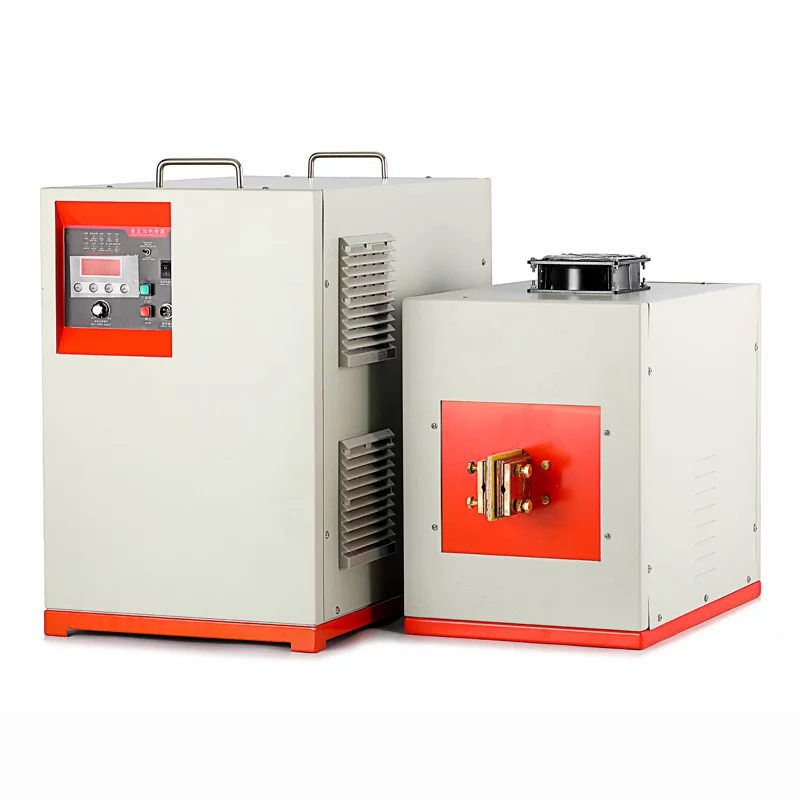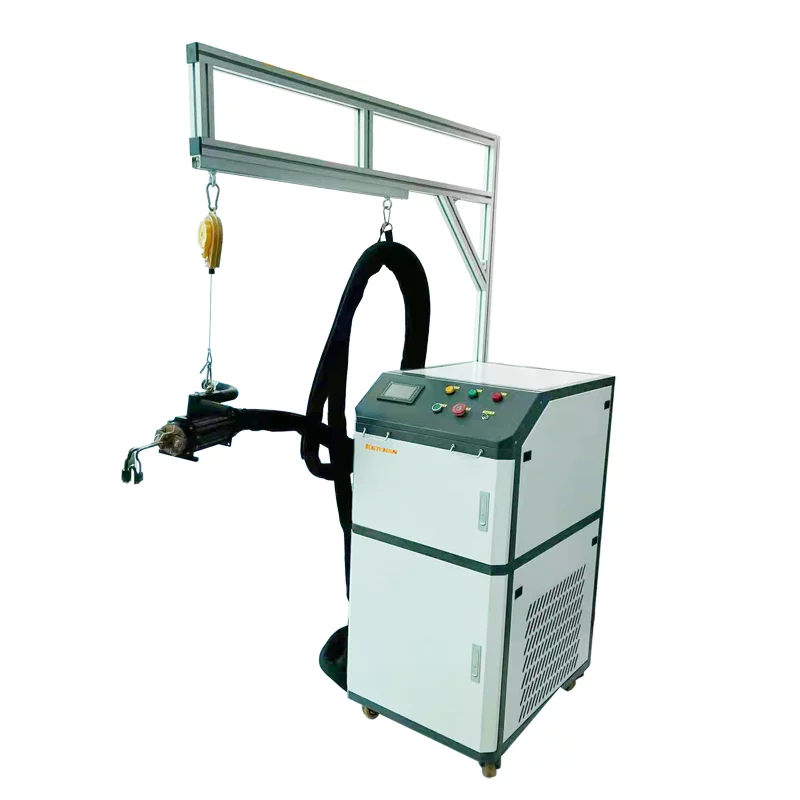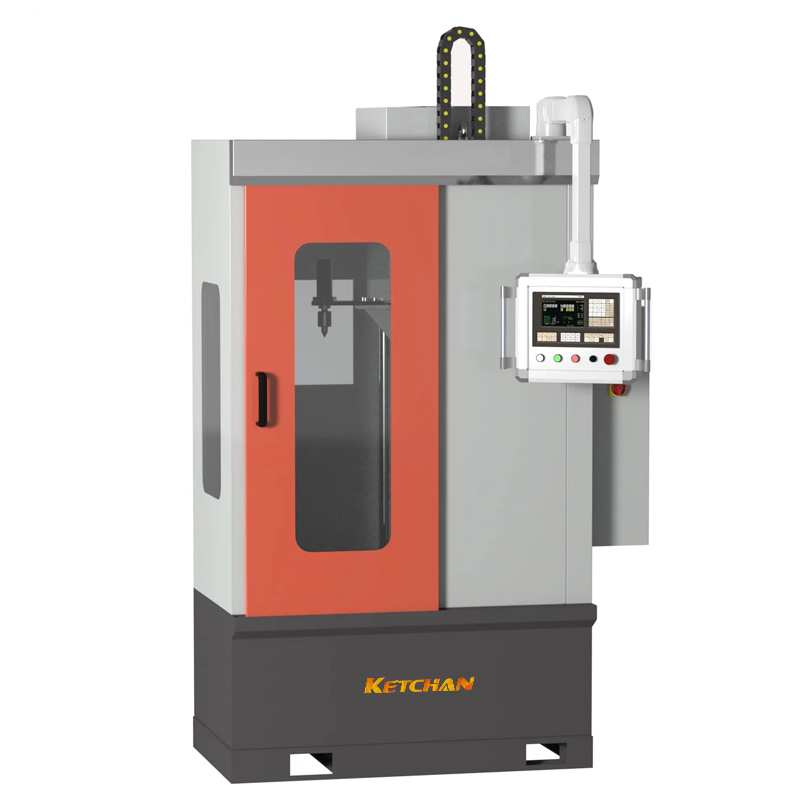Based on thirty years of cupola production and nearly ten years of electric furnace production practice, this paper comprehensively summarizes the practical experience and lessons accumulated.
The process characteristic of cast iron melting in an electric furnace is that the supercooling degree of alloy increases and the superheating temperature is higher after molten iron remelting, which leads to new problems in the quality control of cast iron.
Furnace hot metal after remelting, contain less impurity content in the cupola, which means higher purity, in its lack of the heterogeneous crystallization of the core in the process of solidification, solidification with the constituent fluctuations and the concentration of ups and downs to weaker, which makes the supercooling degree increase (here refers to the so-called supercooling degree of the same composition in the coagulation of the iron-carbon alloy than the actual temperature along with the stable system that part of the crystallization temperature), the possibility of alloy solidification along with the interface stability department, is the crystallization product of Fe3C (cementite) content increased, while the cupola molten iron due to containing more heterogeneous core, along with the stability during solidification is a tendency in the development of large, In the fe-C alloy phase diagram, ferrite and graphite are the products of stable crystallization.
Electric furnace smelting characteristics of cast iron, requirements in cast iron foundry workers composition selection, burden ratio, the dosage of scrap steel, inoculation process, increase carbon decarburization, desulfurization, spheroidizing process, injection vernacularizing process, temperature control, pouring process, and the ten aspects of problems need to renew the idea, take practical means to ensure and improve the quality of the product.
Electric furnace cast iron burden ratio and synthetic cast iron
In the casting industry, it is often said that the composition of casting materials determines the structure and the properties of the structure; This sentence is not comprehensive. In our production practice, we found that many cast iron, in the same composition, mechanical properties are quite different. The quality of molten iron is not only related to its composition, but also has a close relationship with burden ratio (pig iron dosage, scrap dosage, return dosage, alloy dosage), melting and furnace temperature, inoculation process, etc. The so-called synthetic cast iron refers to the cast iron material made by the method of carburizing and using more than 50% scrap steel in the mix. Because of the high melting temperature, it is only suitable to be smelted in the electric furnace. At present, synthetic cast iron mainly consists of synthetic gray iron and ductile iron.
Through a lot of practice, for HT250, HT300, and other high-strength gray cast iron, scrap strength and cast iron affect the structure.
1. Taboo ingredients
(1) With the combination of high proportion scrap steel (especially ship plate) and high proportion return charge (pouring riser, waste casting, iron scrap), the added amount of synthetic grey iron scrap shall not exceed 50%;
(2) Mix high proportion scrap steel (especially ship plate) with pig iron with high sulfur and phosphorus;
(3) More than 40% of return charge (riser, waste castings, iron filings).
2. Optimized mix of ingredients (%)
Constitute pig iron scrap return charge
The ratio of A403030
The ratio of B304030
The ratio of C204040
The ratio of D205030
3. Manganese sulfur content
The content of manganese can reach 1.0-1.2% when hardness needs to be increased, but the corresponding increase of sulfur content is not required (sulfur content in gray iron is separately analyzed).
A company in order to save costs, multi-purpose scrap, in two months trial production synthetic high cast iron, scrap steel dosage was 60%, there was a time in a scrap back to additional burden and small amounts of iron filings, the original quality is good, but after a period of time found a white casting volume shrinkage cavity, shrinkage porosity and hard spots, and constant more and more serious.
The cause of this defect: it is preliminarily judged that the high content of MnS in molten iron causes the micro shrinkage cavity and porosity of casting, and the white hard spot is formed by the enrichment of MnS.This is due to the high grade of grey iron HT300 components Mn content is higher (1%), combined with high manganese steel scrap itself also (16 manganese steel containing Mn in 1.6%) in the planking, and scrap steel in the S and S in recycled iron (iron) and manganese reaction of MnS in furnace charge accumulation reaches a certain degree, will generate too much, to produce the above defects.
In order to reduce the CONTENT of MnS in molten iron, it is generally adjusted by adding a certain amount of high-quality new pig iron (low S and low Mn). In addition, improving the inoculation effect can make MnS refined and reduce its adverse effects.
When the amount of waste steel is too large, because the melting point of waste steel is about 1530 degrees, and the melting point of cast iron and return charge is only about 1230 degrees, more waste steel increased power consumption, increased the supercooling tendency of molten iron, also adsorbs a lot of nitrogen, generally speaking, the synthetic cast iron process is not suitable for gray cast iron, but more suitable for ductile iron
Second, about the furnace gray cast iron-sulfur problem
As mentioned above, compared with cupola smelting process of cast iron by medium frequency induction furnace, in addition to the advantages of high melting temperature, there are many disadvantages, mainly in three aspects: first, the tendency of molten iron to be supercooled is relatively large, which can easily produce D and E type graphite affecting the mechanical properties of the material; The second is that the molten iron is pure and the heterogeneous crystallization core is few, which leads to poor inoculation effect. Under the same composition condition, the casting strength is low and the iron is hard. Third, the shrinkage tendency is larger, when manganese content is higher in high-grade gray cast iron, micro shrinkage cavity and porosity are easy to occur.
The measures to address the above problems are as follows:
1. Add a high temperature holding time in the late melting stage to make the molten iron grains of all kinds of charge uniform as much as possible, especially refined graphite;
2. Appropriately increase foreign core (such as sulfide), enhance inoculation effect, and promote the formation of A-type graphite;
3. Control sulfur and manganese content and the ratio of high-grade gray cast iron, control return charge ratio to achieve appropriate composition.
These measures are different for casting products with different structures, which should be mastered in practice.
One day in a certain company, 6 furnace ash iron HT300 molten iron was smelted in an electric furnace, and hydraulic valve G03, G02, and other products were cast. After dissecting the internal tissues, large areas of micro shrinkage holes, shrinkage loosening, and shrinkage cracking were found, and a total of 830 pieces were all scrapped (see attached picture). Brinell hardness HBS241, chemical components C3.27, Si1.78, Mn0.83, S0.087, P0.04 were detected. Pearlite 98%, E-shaped graphite up to 80% (Type A 20%), graphite length 5 grades. According to the relevant personnel research analysis, should be molten iron material gave a problem.
The chemical composition analysis results appear to be normal for thin-walled HT300 castings in general, however, there are problems with hydraulic valve castings (with thicker walls).The cause of this defect: it is preliminarily judged that the content of MnS in the molten iron is too high, which causes the micro shrinkage hole, shrinkage porosity, and shrinkage crack of the casting, that is to say, the content of S and Mn in the molten iron is beyond the range suitable for casting (there are differences in components of different castings).
Due to the addition of a certain amount of S-increasing agent in smelting, the content of S and Mn in molten iron accumulates to a certain extent, which will lead to the S content in molten iron exceeding the requirements of normal solidification and crystallization of the casting itself, thus causing such defects. Countermeasures: Stop adding S-increasing agent, adjust the content of Mn, ensure the normal content of five elements of HT300 gray iron, and eliminate all defects after adjustment.
Increased S agent by joining in the molten iron furnace ash to form a certain amount of MnS, as the heterogeneous core, improve the effect of inoculation, which from the theory is correct, but most of the literature in recent years, the electric furnace high grade of grey iron S content should be controlled in 0.05 0.10% more appropriate, however, many factories of practice have proved that when Mn content is about 1%, if the casting S content more than 0.05% of composition analysis, the shrinkage cavity defects, casting begins when S content more than 0.07% in volume shrinkage occurs, how to explain this phenomenon?
S there are two forms of gray cast iron, is a kind of simple substance, the other is a combination of MnS, grey iron plays a core role of crystals and mainly combining the state of MnS, we are now testing method (both chemical analysis and spectral analysis), can only analyze casting and molten iron in the elemental state S, and S is in combining state (MnS) assay. When the content of elemental S exceeds 0.05%, the content of S in the combined state is relatively high. At this time, the content of molten iron is as follows:
MnO+FeS=MnS+FeO, FeO+C=Fe+CO, or 2FeO+C=2Fe+CO2
At this time, the molten iron in the solidification process will precipitate CO or CO2 and produce part of the brown MnS powder, forming iron slag reaction gas shrinkage. As long as certain conditions are met, such gas shrinkage occurs not only in the hot metal of the electric furnace but also in the hot metal of the cupola. In fact, in the melting process, we have added some sulfur, which comes from:
1. Brought by the pouring system of the returning furnace, the content of sulfur and phosphorus in the pouring system is much higher than that in the casting;
2, the sulfur in pig iron, general pig iron-sulfur content is not high, and we buy ordinary pig iron are carrying different degrees of slag (Rubbish), we will not test, but this rubbish contains high sulfur phosphorus, will be brought into the furnace;
3, scrap steel and pig iron and another burden of rust, iron oxide content are higher, into the molten iron will increase the absorption of sulfur. Under such circumstances, if we add iron sulfide to increase S, it will be too much. In the actual production of high-grade gray cast iron, it is proper to control the elemental S in molten iron between 0.03-0.05%.
Iii. Breeding and modification of high-grade gray iron in an electric furnace
About the high grade of grey iron (HT300, for example) technology, the traditional iron inoculation quantity is 0.3 0.4% of (mainly cupola production), in recent years, with the popularity of electric furnace, inoculation quantity increase gradually, the latest information recommendation 0.5 0.6%, oneself through long-term practice, choosing inoculation quantity is around 0.8%, gain strength hardness and machinability, after processing the internal defects of castings are greatly reduced.
A company manufacturing high grade of the solenoid valve, the technical requirements of the casting hardness greater than HB200, strength is greater than 300 n/was, this product main wall thickness more than 50 mm, through many experiments, at the same time of increasing an inoculation quantity, take the second stream inoculation, to eliminate the defect of the thick wall bring organization bulkily, improves the casting density, guaranteed the product quality.
As for the secondary flux inoculation of molten iron, the addition of 0.2-0.7mm of uniform inoculation agent before pouring is more suitable for thick pieces, but it increases the shrinkage performance of molten iron when it is used for small pieces.
There was a period when the surface of some products of a certain company showed a high hardness of white bright spot after processing, and the tool slipped. After analysis, it turned out that the chunk of the inbreeding agent was too large, which was not suitable for the capacity of molten iron. As a result, the inbreeding agent failed to melt completely when the molten iron was poured, and the local amount of silicon of the casting was enriched to form the hardening phase. The same defect occurs when the molten iron is incubated at a low temperature with the secondary flow.
Is a company specializing in the production of HT300 gray iron hydraulic parts factory, casting a KP pump body, casting wall thickness around 30 mm, according to the experience of HT300 composition ingredients, hot metal components: C3.0-3.1%, Si1.7-1.8%, Mn0.95-1.05%, P0.05%, S0.04%, casting body anatomy tensile up to 300 n/was, but near the gate for multiple products, shrinkage and shrinkage crack, whatever the gating system adjustment, is no effect,
There is no way but to increase the carbon equivalent and reduce the strength, and adjust it to C3.2-3.3% and Si1.8-2.0%, and the defects will disappear. However, after the pressure testing, most of the products will produce expansion leakage, and the tensile strength of the bulk test is also unqualified, resulting in the bulk return of the main engine factory. Associated with having a group of similar pump body before, due to listening to others’ advice, S with pyrite, molten iron containing S, when more than 0.07%, the casting shrinkage of the large area, accumulate a large amount of waste, in order to deal with this batch of scrap, according to the principle of rare earth desulfurization, when to join this kind of waste, the inoculation in the process of adding a small amount of rare earth magnesium ferrosilicon (about 0.2%), effectively reduce the sulfur content, solves the problem of shrinkage cavity.
In view of the shrinkage and crack of the KP pump at that time, although the original molten iron does not contain high sulfur, a small amount of rare earth magnesium ferrosilicon (about 0.2%) was also tried during inoculation, and the ideal result was also obtained, and the shrinkage problem was completely solved. Analysis of the mechanism of the cast iron to produce trap, mainly the gases in the molten iron (including oxygen, nitrogen, hydrogen, etc.) of these gases in the late coagulation precipitation, molten iron can’t add, the defects, and rare earth magnesium ferrosilicon, as a kind of grey iron inoculant (is also a kind of nucleating agent), is a good removal of gas, hot air content is greatly reduced, the defects are eliminated.





